In just a few minutes, it will be exactly 40 years that the crew of Apollo 17 took off from the Moon, ending humanity’s last excursion to date on our satellite.
Incredibly, no human ventured beyond low Earth orbit since.
In just a few minutes, it will be exactly 40 years that the crew of Apollo 17 took off from the Moon, ending humanity’s last excursion to date on our satellite.
Incredibly, no human ventured beyond low Earth orbit since.
 Imagine a world with weather. Hydrocarbon rains falling from an orange sky onto a deadly cold surface with chunks of ice as hard and as dry as rock; or onto vast hydrocarbon seas driven by freezing winds.
Imagine a world with weather. Hydrocarbon rains falling from an orange sky onto a deadly cold surface with chunks of ice as hard and as dry as rock; or onto vast hydrocarbon seas driven by freezing winds.
Meanwhile, through the orange haze overhead, you may glimpse a giant orb, filling half the sky, and surrounded by an even more magnificent flat ring.
This world exists. It’s Saturn’s moon Titan, the only body in the solar system other than the Earth with a stable liquid on its surface and genuine weather with precipitation and a “hydrological” cycle.
And now we know for sure that Titan has real rivers. Dubbed “Mini Nile” on NASA’s Web site, this 400 km long hydrocarbon river is the largest seen to date, and it appears to be filled with liquid along its entire length.
I truly envy those humans who, hopefully on a not too distant day in the future, will stand on the banks of this river, perhaps not even wearing a pressure suit just heated clothing and a breathing mask, and stare at this river in awe.
What will they find in the liquid? Is it harboring some primitive form of life?
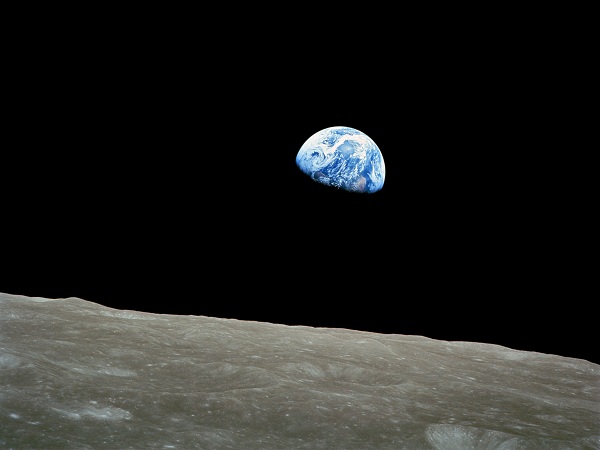 One of my favorite photographs ever, in fact one that I even use on my Facebook timeline page as a background image, was taken by a certain Bill Anders when he was flying almost 400,000 km from the Earth. Anders was one of the first three members of our species who flew to another celestial body (albeit without landing on its surface; that came a bit later.)
One of my favorite photographs ever, in fact one that I even use on my Facebook timeline page as a background image, was taken by a certain Bill Anders when he was flying almost 400,000 km from the Earth. Anders was one of the first three members of our species who flew to another celestial body (albeit without landing on its surface; that came a bit later.)
Yesterday, I read a very interesting article about Anders, both his trip on board Apollo 8 and his life afterwards. The article also touched upon the topic of religion.
The message radioed back by the crew of Apollo 8 is probably the most memorable Christmas message ever uttered by humans. (Or maybe I am biased.) And yes, it starts with the words from Genesis, but I always viewed it the way it was presumably intended: as an expression of awe, not as religious propaganda.
The curious thing, as mentioned in the article, is that it was this trip around the Moon that changed the traditional Christian viewpoint of Anders about Earthlings created by a God in his own image.
“When I looked back and saw that tiny Earth, it snapped my world view,” Anders is quoted as saying. “Are we really that special? I don’t think so.”
Well, this pretty much sums up why I am an atheist. I’d like to believe that it’s not hubris; it’s humility.
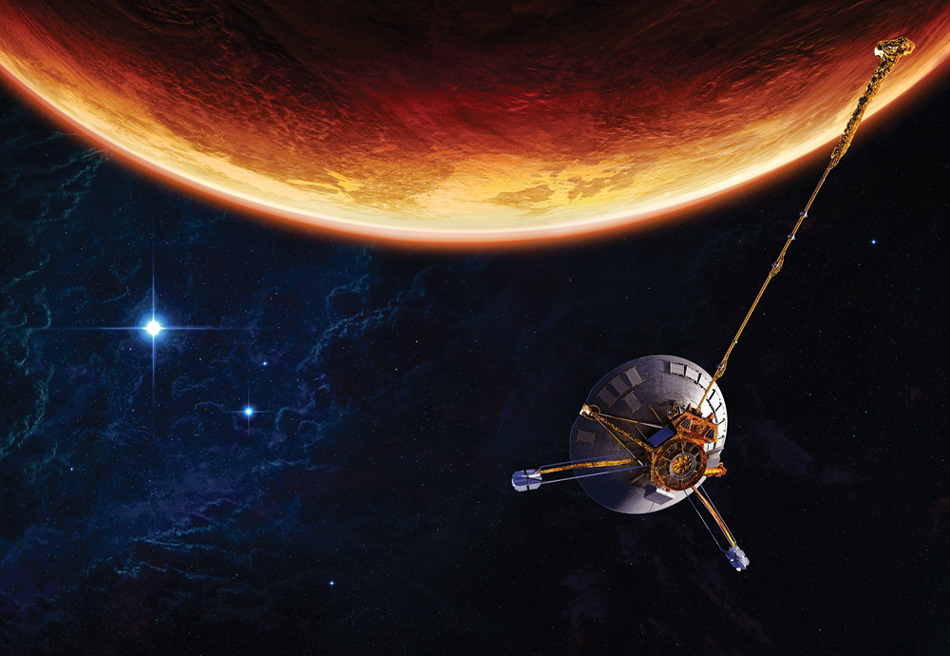 An article we wrote with Slava Turyshev about the Pioneer anomaly and its resolution, at the request of IEEE Spectrum, is now available online.
An article we wrote with Slava Turyshev about the Pioneer anomaly and its resolution, at the request of IEEE Spectrum, is now available online.
It was an interesting experience, working with a professional science journalist and her team. I have to admit that I did not previously appreciate the level of professionalism that is behind such a “members only” magazine.
Wow. If these plots are to be believed, Voyager 1 may have reached the heliopause at last:
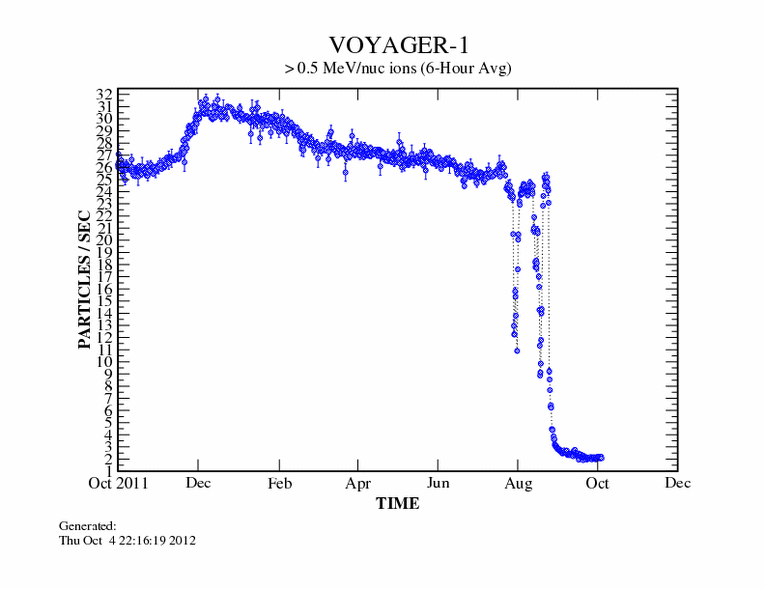 This is, well, not exactly unexpected but still breathtaking.
This is, well, not exactly unexpected but still breathtaking.
The discovery of the heliopause was one of the “holy grail” science objectives of the extended “interstellar” mission of the twin Voyager spacecraft. If confirmed, it means that Voyager 1 is the first man-made object to have entered the interstellar medium, traveling through a region in the outer solar system that is no longer dominated by charged particles from the solar wind. (Gravitationally, this is still very much our Sun’s domain; there are comets out there with elliptical orbits that extend to many thousands of astronomical units.)
Not bad for a spacecraft that was launched over 35 years ago and flew by Saturn just a few months into the presidency of Ronald Reagan. Its twin finished its flyby of Neptune when the Berlin Wall was still standing. And they are both still alive and well. Voyager 1 is more than 120 astronomical units from the Sun these days. It takes about 17 hours for its radio signal to reach the Earth. If all goes well, it has sufficient electrical power to operate its on-board instruments for another decade or so.
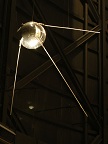 55 years ago today, the Space Age began when the Soviet Union launched “Elementary Satellite 1”, better known as Простейший Спутник-1; or, in Latin transliteration, as (Prosteishii) Sputnik-1.
55 years ago today, the Space Age began when the Soviet Union launched “Elementary Satellite 1”, better known as Простейший Спутник-1; or, in Latin transliteration, as (Prosteishii) Sputnik-1.
Inadvertently perhaps, but Sputnik-1 also launched what is nowadays called “radio science”: observations that utilize a spacecraft’s radio signal to determine the spacecraft’s position (and thus, the forces that act on the spacecraft) and the properties of the medium through which the signal travels. In the case of Sputnik-1, this meant deducing the density of the upper atmosphere (from the drag force acting on the satellite) and the electromagnetic properties of the ionosphere.
Sputnik-1 spent a total of about three months in orbit (22 days operational) before it fell back to the Earth. By then, the Space Race was running full steam ahead, culminating in the manned Apollo Moon landings in 1969… an accomplishment that, today, seems to be more in the realm of fiction than back in 1957.
Busy celebrating our 20th wedding anniversary yesterday, I forgot that there was another important anniversary on September 12: it was fifty years ago yesterday that a certain John F. Kennedy uttered the words, “We choose to go to the Moon. We choose to go to the Moon in this decade and do the other things, not because they are easy, but because they are hard, because that goal will serve to organize and measure the best of our energies and skills, because that challenge is one that we are willing to accept, one we are unwilling to postpone, and one which we intend to win, and the others, too.” And with those words, an astonishing sequence of events took place, and before the 1960s came to an end, two Americans indeed landed on the Moon… a technological feat the like of which the world has not seen since 1972, when the last of the Apollo Moon shots took place.
Nature had a nice editorial a few days ago about the Pioneer Anomaly and our research, titled “…and farewell to the Pioneer anomaly” (so titled because in the print edition, it is right below the obituary, titled “Farewell to a pioneer”, of Bernard Lovell, builder of what was at the time the world’s largest steerable radio telescope at Jodrell Bank).
Farewell, yes, though I still hope that we will have the wherewithal to publish a longer article in which we provide the details that did not fit onto the pages of Physical Review Letters. We ought to update our review paper in Living Reviews in Relativity, too. We need to prepare for the release of the data used in our analysis. And, if possible, I’d like to spend time tackling some of the open questions we discuss near the end of our last paper, such as analyzing the spin behavior of the two spacecraft or making use of DSN signal strength measurements to improve the trajectory solution.
First things first, though; right now, my priorities are to a) earn money (which means doing things that I actually get paid for, not Pioneer) and b) get ready to have our upstairs bathtub replaced (the workmen will be here Monday morning), after which I plan to do the wall tiles myself (with fingers firmly crossed in the hope that I won’t mess it up too badly.)
Yes, sometimes such mundane things must take priority.
Ray Bradbury would have turned 92 yesterday. Were he still alive, perhaps he would have appreciated this birthday gift: the landing site of NASA’s Curiosity rover on Mars was just named in his honor.
And Curiosity is now leaving tracks in the Martian dirt at Bradbury Landing.
We now have a beautiful view from space of Curiosity descending to the Martian surface.
Space exploration proceeds a lot slower than envisioned back the 1960s, but the human infrastructure around the Red Planet is slowly taking shape, as evidenced by this picture and also by the real-time relay of Curiousity signal during landing by Mars Odyssey.
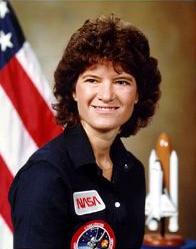 Good-bye, Sally Ride. America’s first female astronaut died today, at age 61, after a battle with cancer. When she flew on board Challenger in 1983, Ride was also NASA’s youngest astronaut to have made it to space.
Good-bye, Sally Ride. America’s first female astronaut died today, at age 61, after a battle with cancer. When she flew on board Challenger in 1983, Ride was also NASA’s youngest astronaut to have made it to space.
Ride is also known as the only person who publicly supported Roger Boisjoly, the Morton-Thiokol engineer who tried to warn NASA that Challenger was in mortal danger, only to be overruled by his bosses. Boisjoly himself died earlier this year, at age 73.
The world’s first female astronaut, or rather, cosmonaut, is still alive: Valentina Tereshkova is 75 this year, seemingly in good health (judging by her appearance in recent press photographs). May she enjoy many more happy years!
43 years ago today, the lunar module (nicknamed Eagle) of Apollo 11 touched down in the Sea of Tranquility, fulfilling a centuries-old dream of humanity.
Too bad that the 40th anniversary of the last Moon landing is rapidly approaching. That, if you ask me, is four wasted decades of manned space exploration.
Incidentally, the book The Eagle Has Landed, by Jack Higgins, was the first English-language book I ever read, sometime in the late 1970s. It was given to me by my aunt (the one who, sadly, is no longer with us) when I complained to her that I was having a hard time improving my English. That particular book, along with several others, was lost when the post office lost a parcel from my Mom. Thanks to Amazon, I managed to replace them all, with one exception: an English-language collection of 11 science-fiction stories that was published in Soviet-era Moscow.
Reading books is a good way to learn a language. My French leaves a lot to be desired (being able to utter a meaningful sentence would be nice) but what little I know I was able to improve by trying to read Jules Verne’s De la Terre à la Lune in French. I first read that book (in Hungarian, of course) at the age of six, in 1969… just as Neil Armstrong and Buzz Aldrin landed on the Moon.
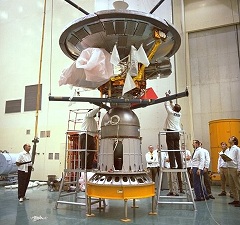 Having been told by a friend that suddenly, there is a spate of articles online about the Pioneer anomaly, I was ready to curse journalists once I came across the words: “a programmer in Canada, Viktor Toth, heard about the effort and contacted Turyshev. He helped Turyshev create a program …”.
Having been told by a friend that suddenly, there is a spate of articles online about the Pioneer anomaly, I was ready to curse journalists once I came across the words: “a programmer in Canada, Viktor Toth, heard about the effort and contacted Turyshev. He helped Turyshev create a program …”.
To be clear: I didn’t contact Slava; Slava contacted me. I didn’t “help create a program”; I was already done creating a program (which is why Slava contacted me). And that was the state of things back in 2005. What about all the work that I have done since, in the last seven years? Like developing a crude and then a more refined thermal model, independently developing precision orbit determination code to confirm the existence of the anomaly, collaborating with Slava on several papers including a monster review paper published by Living Reviews in Relativity, helping shape and direct the research that arrived at the present results, and drafting significant chunks of the final two papers that appeared in Physical Review Letters?
But then it turns out that journalists are blameless for a change. They didn’t invent a story out of thin air. They just copied the words from a NASA JPL press release.
And I am still trying to decide if I should feel honored or insulted. But then I am reminding myself that feeling insulted is rarely productive. So I’ll go with feeling honored instead. Having my contribution acknowledged by JPL is an honor, even if they didn’t get the details right.
In just over three weeks’ time, the Mars Science Laboratory rover named Curiosity will land on the surface of Mars.
At least that’s what we hope will happen.
The Curiosity landing sequence is extremely complex, using never before tried technologies. The large rover is equipped with a parachute and a giant heat shield when it plunges into the Martian atmosphere. First, it has to discard its heat shield at the right time. Next, its parachute must open. At the right altitude, the parachute must detach, and retrorockets must fire. Then, the rover itself is lowered onto the surface on nylon ropes (effectively, a skycrane mechanism). Then, the ropes must be cut by explosive bolts and the skycrane with the retrorockets must fly away before crashing onto the surface at a safe distance. In this entire sequence, there is very little room for error.
Mars has not been kind to spacecraft. More than 50% of missions to the Red Planet failed. Hopefully, Curiosity will not contribute to that sad statistic. But, it will be a scary landing.
The other day, I came across a picture of Kosmonaut Yuri Gagarin, a floating deep space tracking station operated by the Soviet space establishment in the 1970s. The picture was actually posted to Facebook by The Planetary Society. The source of the photograph is a book, Soviet Robots in the Solar System, published by Springer in 2011.
I felt compelled to buy this book. The Soviet space program always fascinated me. I grew up in the 1960s and 1970s behind the Iron Curtain; yes, we heard about Apollo, but we heard just as much about Soyuz, Vostok, Lunokhod, Venera, not to mention the innumerable spacecraft named Cosmos, followed by a three-digit (later, four-digit) number, whose missions remained shrouded in secrecy.
Of course we now know that many of those Cosmos craft were, in fact, failed missions, including failed missions to Mars and Venus. The Soviets tended to hide their failures and announce missions only when (at least partial) success was already assured.
But it’s not like they were unsuccessful. Sure, they never managed to land a man on the Moon (or even take a human beyond Low Earth Orbit); their attempt to build a launch vehicle comparable to America’s Saturn V, the N-1, failed miserably. But they did land not one but two teleoperated rovers on the Moon decades before the American Sojourner mini-rover arrived on Mars. They experimented with autonomous deep space navigation. They could also claim the first successful soft landing on the surface of Mars (although Mars-3 only remained operational for a few seconds after the landing).
And then there is their most spectacular success story: the Venera series of probes to Venus. Their persistence (and their willingness to tolerate early failures) paid off: Venera 7 successfully reached the Venusian surface, Venera 9 transmitted the first black-and-white images from the planet, followed by the spectacular color panorama captured by Venera 13 and 14.
The tragedy is what happened to this space program afterwards. The US unmanned space program carried on, budget cuts and failures notwithstanding; Voyagers 1 and 2 are still transmitting from the edge of the solar system, a rover has been operating on Mars for the past eight years with another on its way, a probe is en route to Pluto, others are in orbit around Mercury and Saturn. Meanwhile, by the late 1980s, the Soviet unmanned program became a shadow of its former self, only to disappear pretty much completely with the collapse of the Soviet Union and the subsequent failure of Mars-96. More recently, there was hope that the program would be revived with Phobos-Grunt (a hope echoed in the aforementioned 2011 book); alas, that was not to be, as Phobos-Grunt also failed to leave Earth orbit and eventually crashed back onto the Earth (no doubt in the old days, it would have earned another Cosmos designation).
Anyhow, the book by Huntress and Marov arrived in my mailbox today, and apart from what seems to be a higher-than-usual number of trivial typos (one example: “back-and-white”; publishers really had gotten lazy ever since authors started delivering manuscripts electronically) it is a quality book indeed, providing a reasonably complete account of these Soviet efforts. As I am flipping through its pages, I am reminded of those newspaper and magazine articles or the occasional television report (in glorious black-and-white, of course) that captivated me so much as a child.
I didn’t realize that the first ever photograph of the Earth taken from space predates Sputnik by more than a decade.
This amazing picture is one of several frames shot by a camera on board a captured V-2 rocket, launched from the White Sands Missile Range on October 24, 1946. Almost 66 years ago.
Amazing.
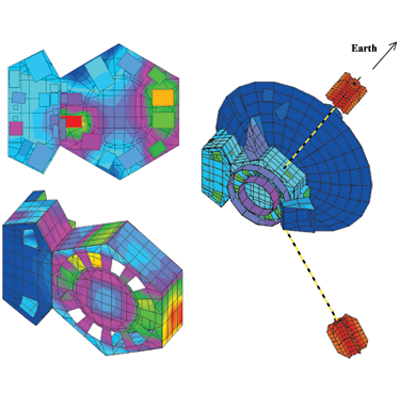 Our latest Pioneer paper, in which we discuss the results from the Pioneer thermal model and its incorporation into the orbital analysis (the conclusion being that no significant anomalous acceleration remains once thermal radiation is properly accounted for) made it to the cover of Physical Review Letters. I am very grateful that I was given the opportunity to participate in this research, and I am very proud of this work and our results.
Our latest Pioneer paper, in which we discuss the results from the Pioneer thermal model and its incorporation into the orbital analysis (the conclusion being that no significant anomalous acceleration remains once thermal radiation is properly accounted for) made it to the cover of Physical Review Letters. I am very grateful that I was given the opportunity to participate in this research, and I am very proud of this work and our results.
The Dragon spacecraft of SpaceX corporation successfully splashed down after a successful overall mission of hauling cargo to and from the International Space Station.
It’s an incredible success for a commercial venture.
I also found the appearance of the SpaceX mission control facility revealing. Ordinary office desks, ordinary office chairs, ordinary flat screen monitors. Nothing special, no horrendously expensive custom hardware.
This reinforces my impression that the SpaceX venture actually brought the 21st century to NASA and the ISS. An impression that was created by the ISS crew’s reaction to the Dragon capsule’s “new car smell” and its space-age interior complete with smooth surfaces, blue LEDs and whatnot.
Congrats to SpaceX. Well done. Here is to the future.